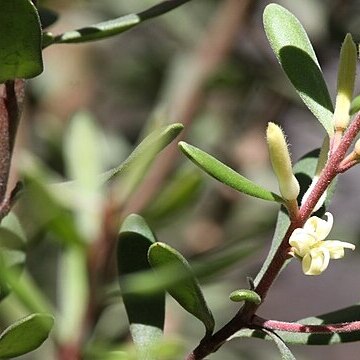A tall shrub. It grows 2-6 m high and spreads 1.5-3.5 m wide. The young growth is velvety. The bark is smooth and grey. The leaves are 3-7 cm long by 0.6-1.5 cm wide. They are narrowly oval or spoon shaped. They are alternate and can be crowded. They are deep green above and paler underneath. The edges of the leaves curve back. The flowers are 1.4 cm across and yellow. The fruit are 1.2 cm long by 1.2 cm wide. They are hairy.


